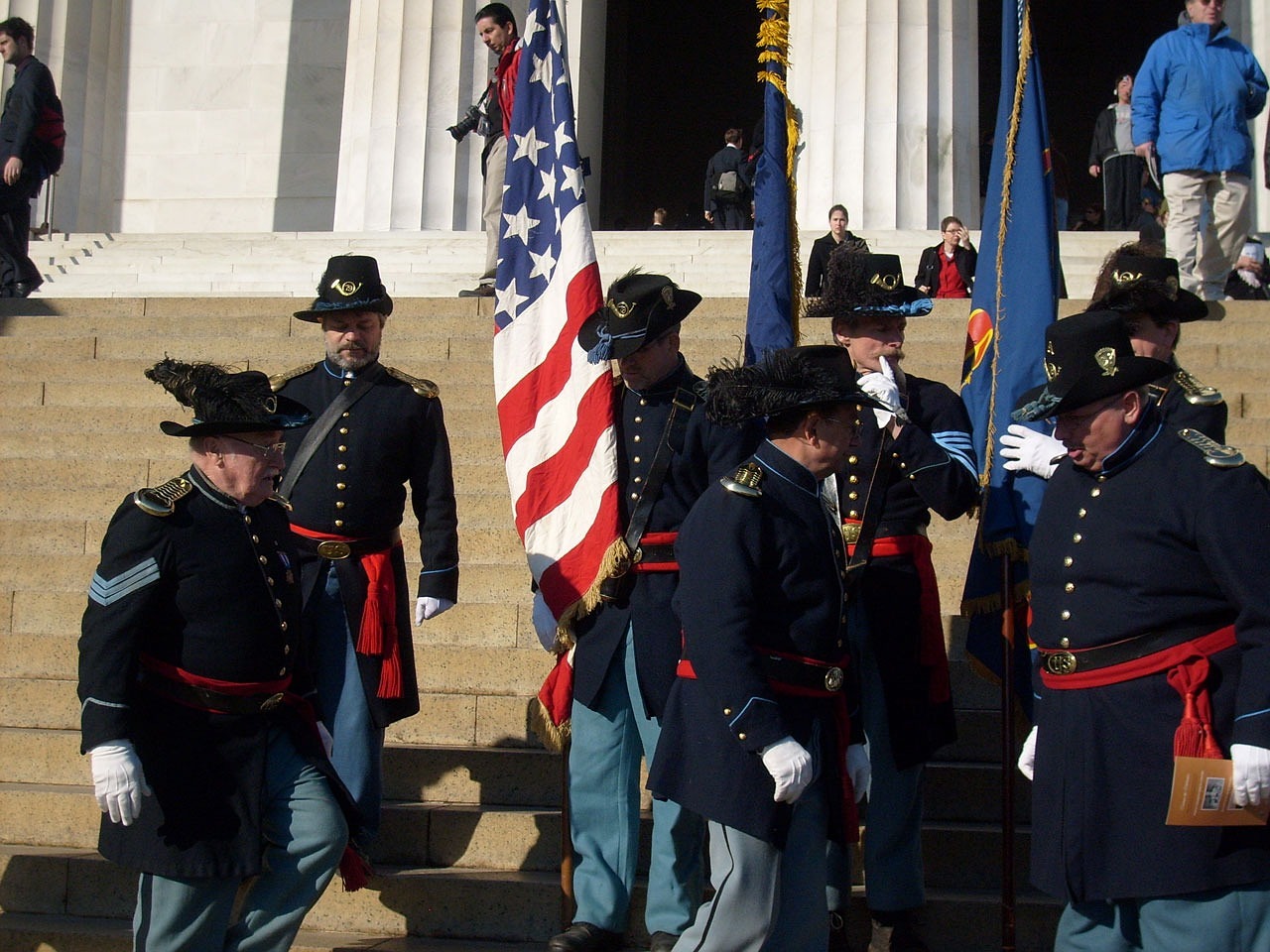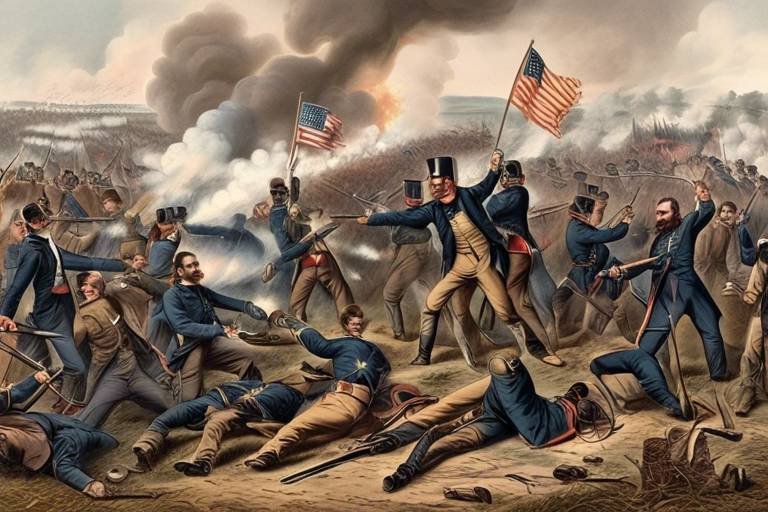The Historical Context of the Civil Rights Act
When delving into the historical context of the Civil Rights Act, it is essential to understand the tumultuous backdrop against which this pivotal legislation was enacted. The 1960s in the United States were marked by deep-rooted racial tensions, systemic discrimination, and widespread segregation that permeated every aspect of society. African Americans faced pervasive inequality, limited opportunities, and blatant racism that fueled the need for change on a national scale.
Against this backdrop of social unrest and civil rights activism, the Civil Rights Act emerged as a beacon of hope and a catalyst for transformation. It was a response to decades of struggle, sacrifice, and resilience by individuals and communities fighting for justice and equality. The Act aimed to dismantle the legal framework that upheld segregation and discrimination, paving the way for a more inclusive and equitable society.
The journey towards the Civil Rights Act was paved with challenges, resistance, and moments of profound courage. From the grassroots efforts of ordinary citizens to the leadership of iconic figures like Martin Luther King Jr., Rosa Parks, and Malcolm X, the Civil Rights Movement galvanized a nation and sparked a seismic shift in public consciousness.
Legal battles in the courtroom, landmark Supreme Court decisions like Brown v. Board of Education, and the tireless advocacy of civil rights activists all played a crucial role in shaping the path towards legislative change. The political climate of the 1960s was charged with tension and transformation, as the federal government grappled with its role in promoting civil rights and addressing the demands for racial justice.
The historic March on Washington stands as a testament to the power of collective action and the unyielding spirit of those who marched for equality. Martin Luther King Jr.'s iconic I Have a Dream speech echoed across the National Mall, resonating with millions and reinforcing the urgency of enacting meaningful change.
With the passage of the Civil Rights Act of 1964, a new chapter in American history began. The Act's provisions, which prohibited discrimination in public accommodations, employment, and voting rights, represented a significant leap forward in the fight for civil rights and equality. Its impact reverberated far beyond its immediate effects, shaping the course of future legislation and inspiring generations to continue the struggle for justice.
The legacy of the Civil Rights Act endures to this day, serving as a reminder of the progress made and the work that remains. It stands as a testament to the power of collective action, the resilience of marginalized communities, and the ongoing pursuit of a more just and equitable society. As we reflect on the historical context of the Civil Rights Act, we are reminded of the enduring importance of upholding the principles of equality, justice, and human rights for all.

Racial Segregation in the United States
Racial segregation has deep roots in the history of the United States, with discriminatory practices and laws shaping the social fabric of the nation for decades. The era of Jim Crow laws, established in the late 19th and early 20th centuries, enforced racial segregation in public facilities, schools, and housing, perpetuating inequality and marginalization of African Americans. These laws institutionalized discrimination, denying basic rights and opportunities to people of color and reinforcing a system of white supremacy.
The struggles faced by African Americans during the early to mid-20th century were profound and pervasive. From being denied access to quality education and employment opportunities to facing violence and intimidation, the African American community fought against systemic racism and segregation on multiple fronts. Despite these challenges, individuals and organizations emerged to challenge the status quo and demand equal rights and dignity for all citizens.
Throughout this period, African Americans endured racial segregation in all aspects of life, from segregated water fountains and buses to separate schools and neighborhoods. The pervasive nature of segregation not only limited opportunities for economic and social advancement but also perpetuated harmful stereotypes and prejudices that hindered genuine social progress and unity.
As the Civil Rights Movement gained momentum in the 1950s and 1960s, the push for desegregation and equal rights intensified, challenging the systemic barriers that had long oppressed minority communities. The courageous actions of individuals like Rosa Parks, who refused to give up her seat on a segregated bus, and the powerful leadership of figures like Martin Luther King Jr. and Malcolm X brought national attention to the injustices of segregation and galvanized support for change.
The legacy of racial segregation in the United States serves as a stark reminder of the injustices and inequalities that have plagued the nation's history. While progress has been made in dismantling overtly discriminatory practices, the effects of segregation continue to reverberate in contemporary society, highlighting the ongoing need for vigilance and activism in the pursuit of equality and justice for all.

Civil Rights Movement
The Civil Rights Movement in the United States marked a significant turning point in the country's history, as individuals and communities united to fight against racial injustice and discrimination. Emerging in the mid-20th century, this movement was fueled by the tireless efforts of activists, leaders, and ordinary citizens who sought to challenge the status quo and demand equality for all. At its core, the Civil Rights Movement aimed to dismantle the systemic barriers that perpetuated segregation and inequality, advocating for the rights of African Americans and other marginalized groups.
Key figures such as Martin Luther King Jr., Rosa Parks, and Malcolm X played instrumental roles in galvanizing support for the movement and inspiring others to join the cause. Through nonviolent protests, sit-ins, boycotts, and marches, activists sought to bring attention to the injustices faced by African Americans and push for meaningful change. Their courage and determination in the face of adversity resonated across the nation, sparking a wave of activism and solidarity that reverberated throughout society.
One of the defining moments of the Civil Rights Movement was the Montgomery Bus Boycott, sparked by Rosa Parks' refusal to give up her seat to a white passenger. This act of civil disobedience ignited a wave of protests and demonstrations, leading to the eventual desegregation of public transportation in Montgomery, Alabama. The success of the boycott served as a powerful example of the effectiveness of nonviolent resistance in the fight against segregation.
As the movement gained momentum, it drew attention to the entrenched racism and inequality present in American society. The struggle for civil rights extended beyond legal battles and legislative victories, encompassing a broader push for social and cultural change. Through grassroots organizing and community mobilization, activists sought to challenge deep-seated prejudices and foster a more inclusive and equitable society for all.
The Civil Rights Movement was not without its challenges and setbacks, as activists faced violence, intimidation, and resistance from those who sought to maintain the status quo. Despite these obstacles, the movement persevered, driven by a shared vision of a more just and equitable future. The legacy of the Civil Rights Movement endures today, serving as a reminder of the power of collective action and the ongoing struggle for equality and justice.

Legal Challenges and Supreme Court Decisions
The fight for civil rights in the United States was not only waged on the streets but also in the courtrooms. Legal challenges played a crucial role in dismantling the discriminatory practices that plagued the nation for decades. One of the most significant legal victories came in the form of the landmark Supreme Court decision in Brown v. Board of Education. This ruling, handed down in 1954, declared that segregation in public schools was unconstitutional, marking a major turning point in the battle against racial segregation.
Following the Brown case, a series of legal battles ensued, challenging segregation in various aspects of society. African American activists and civil rights organizations, with the support of dedicated lawyers and advocates, took on cases that questioned the legality of segregation in public facilities, transportation, and housing. These legal challenges aimed to chip away at the foundation of segregation and uphold the principles of equality and justice for all.
Supreme Court decisions during this period not only addressed segregation but also tackled other forms of discrimination. Cases such as Loving v. Virginia in 1967, which struck down laws prohibiting interracial marriage, and Griswold v. Connecticut in 1965, which established a right to privacy, expanded the scope of civil rights and individual liberties in the country.
Moreover, the legal victories achieved through these landmark cases set important precedents for future civil rights legislation and activism. They demonstrated the power of the legal system in shaping social change and advancing the cause of equality. The Supreme Court's role in interpreting the Constitution and upholding the rights of all citizens became a cornerstone in the fight for civil rights and justice.

Political Climate and Public Opinion
During the 1960s, the political climate in the United States was charged with tension and change. The country was in the midst of significant social upheaval, with the Civil Rights Movement gaining momentum and challenging the status quo. The federal government, under the leadership of President Lyndon B. Johnson, played a crucial role in advancing civil rights legislation and addressing systemic racism.
Public opinion was also shifting, as more Americans began to support the push for racial equality and integration. The powerful images and stories emerging from the Civil Rights Movement, including peaceful protests and acts of civil disobedience, captured the hearts and minds of people across the nation. The media played a vital role in shaping public perception and bringing attention to the injustices faced by African Americans.
As the political landscape evolved, so did public attitudes towards race relations. The growing awareness of racial discrimination and the need for change led to increased support for legislative action to address these issues. The Civil Rights Act of 1964, a landmark piece of legislation, reflected this changing tide and marked a significant step towards ending segregation and discrimination in the United States.

March on Washington and Civil Rights Act of 1964
The March on Washington in 1963 was a landmark event in the Civil Rights Movement, drawing over 250,000 people to the nation's capital to demand equal rights for African Americans. This peaceful demonstration culminated in Martin Luther King Jr.'s iconic I Have a Dream speech, which resonated across the country and inspired millions to join the fight for racial equality.
Following the momentum generated by the March on Washington, the Civil Rights Act of 1964 was signed into law by President Lyndon B. Johnson. This historic legislation aimed to end segregation and discrimination based on race, color, religion, sex, or national origin, marking a significant step towards achieving equality for all Americans.
The Civil Rights Act of 1964 included key provisions that prohibited discrimination in public accommodations, employment, and voting rights. It sought to dismantle the barriers that had long prevented African Americans from fully participating in society and enjoying the same rights as their white counterparts.
One of the most significant aspects of the Civil Rights Act was its impact on desegregation. By outlawing segregation in public places such as schools, restaurants, and buses, the legislation paved the way for greater integration and equal treatment under the law.
Moreover, the Civil Rights Act of 1964 set a precedent for future civil rights legislation and inspired a new wave of activism and advocacy for social justice. It remains a cornerstone of the ongoing struggle for racial equality in America, reminding us of the power of collective action and the importance of standing up against injustice.

I Have a Dream
The iconic "I Have a Dream" speech delivered by Martin Luther King Jr. during the historic March on Washington in 1963 remains one of the most powerful and memorable moments in the Civil Rights Movement. In his impassioned address, King eloquently articulated his vision of a future where racial equality and harmony prevailed over prejudice and discrimination. The speech resonated deeply with the thousands gathered at the Lincoln Memorial and reverberated across the nation, inspiring hope and igniting a sense of unity in the fight for civil rights.
King's words, filled with imagery and emotion, painted a vivid picture of a society where individuals were judged not by the color of their skin but by the content of their character. The phrase "I have a dream" became a rallying cry for those seeking justice and equality, symbolizing the aspirations of a generation determined to bring about social change and dismantle the barriers of segregation and inequality.
Through his powerful rhetoric, King called for solidarity among all Americans, urging them to join together in the pursuit of a more just and inclusive society. He envisioned a future where children of different races could play and learn side by side, where the shackles of discrimination were broken, and where the promise of freedom and equality rang true for all citizens.
The "I Have a Dream" speech not only captured the essence of the Civil Rights Movement but also served as a catalyst for change, galvanizing support for legislative actions like the Civil Rights Act of 1964. Its enduring message of hope, unity, and perseverance continues to inspire generations to strive for a more equitable and harmonious society.

speech, and the subsequent passage of the Civil Rights Act of 1964.
One of the most iconic moments in the history of the Civil Rights Movement was the historic March on Washington in 1963. It was during this monumental event that Martin Luther King Jr. delivered his legendary I Have a Dream speech, captivating the nation with his vision of a future where individuals would be judged by their character rather than the color of their skin.
The powerful words spoken by King resonated deeply with the American public, sparking a renewed sense of urgency and hope for racial equality and justice. The I Have a Dream speech became a rallying cry for the Civil Rights Movement, inspiring countless individuals to join the fight for a more inclusive and equitable society.
Following the March on Washington and the widespread attention garnered by King's speech, the momentum for change continued to build. This culminated in the passage of the Civil Rights Act of 1964, a landmark piece of legislation that aimed to dismantle segregation and discrimination based on race in the United States.
The Civil Rights Act of 1964 was a significant step forward in the quest for civil rights and equality. It outlawed discrimination in public accommodations, employment, and voting rights, marking a crucial turning point in the struggle for racial justice. The Act was a testament to the perseverance and dedication of those who had fought tirelessly for equality and served as a beacon of hope for future generations.

Key Provisions of the Civil Rights Act
The Civil Rights Act of 1964 was a groundbreaking piece of legislation that aimed to tackle racial discrimination and segregation in the United States. This historic act contained several key provisions that were instrumental in advancing the cause of civil rights and promoting equality among all citizens.
One of the primary provisions of the Civil Rights Act was the prohibition of discrimination in public accommodations. This meant that businesses such as restaurants, hotels, and theaters could no longer deny service to individuals based on their race. This provision was crucial in dismantling the segregationist practices that had long been entrenched in American society.
Another important aspect of the Civil Rights Act was the prohibition of discrimination in employment. Employers were now required to hire and promote individuals based on their qualifications and merit, rather than their race. This provision opened up new opportunities for African Americans and other minority groups who had long been marginalized in the workforce.
Additionally, the Civil Rights Act addressed voting rights by outlawing discriminatory practices that had been used to disenfranchise minority voters. This provision aimed to ensure that all citizens, regardless of their race, had equal access to the voting booth and could participate fully in the democratic process.
Furthermore, the Civil Rights Act established the Equal Employment Opportunity Commission (EEOC) to investigate and address complaints of discrimination in the workplace. This agency played a crucial role in enforcing the provisions of the act and holding employers accountable for discriminatory practices.
Overall, the key provisions of the Civil Rights Act of 1964 represented a significant step forward in the fight for racial equality and justice in America. By addressing issues of discrimination in public accommodations, employment, and voting rights, the act laid the groundwork for future civil rights legislation and helped pave the way for a more inclusive and equitable society.

Legacy of the Civil Rights Act
After the passage of the Civil Rights Act of 1964, its legacy continues to reverberate through American society, leaving an indelible mark on the fight for equality and justice. The Act not only dismantled legal barriers to discrimination but also set the stage for future civil rights legislation and activism.
One of the key legacies of the Civil Rights Act is its role in reshaping the landscape of American society by outlawing discrimination in public accommodations, employment, and voting rights. By enshrining these protections into law, the Act paved the way for greater opportunities and access for marginalized communities, particularly African Americans.
Furthermore, the Civil Rights Act served as a catalyst for social change, inspiring a new wave of activism and advocacy for civil rights. It galvanized grassroots movements and empowered individuals to challenge systemic racism and inequality, leading to a more inclusive and equitable society.
The Act's impact extended beyond its immediate provisions, influencing subsequent legislation and court decisions that further advanced civil rights. It set a precedent for addressing issues of discrimination and inequality, shaping the legal framework for future battles for justice.
Despite the progress made by the Civil Rights Act, challenges persist in the ongoing struggle for racial justice and equality. The legacy of the Act serves as a reminder of the work that still needs to be done to address systemic racism, discrimination, and social inequities in the United States.
Frequently Asked Questions
- What is the significance of the Civil Rights Act of 1964?
The Civil Rights Act of 1964 was a landmark piece of legislation that aimed to end segregation and discrimination based on race in the United States. It prohibited discrimination in public accommodations, employment, and voting rights, marking a significant step towards achieving racial equality and justice.
- Who were some key figures in the Civil Rights Movement?
The Civil Rights Movement was led by prominent figures such as Martin Luther King Jr., Rosa Parks, and Malcolm X. These individuals played crucial roles in advocating for civil rights and challenging racial injustice through nonviolent protests, grassroots organizing, and powerful speeches.
- What were some of the key provisions of the Civil Rights Act of 1964?
The Civil Rights Act of 1964 included provisions that prohibited discrimination on the basis of race, color, religion, sex, or national origin in public spaces, employment, and voting. It also established the Equal Employment Opportunity Commission to enforce anti-discrimination laws and promote equal opportunity in the workplace.
- How did the Civil Rights Act impact American society?
The Civil Rights Act of 1964 had a profound impact on American society by dismantling legal barriers to racial equality and fostering greater inclusivity. It paved the way for future civil rights legislation, inspired social movements for equality, and continues to shape discussions on race, justice, and human rights in the United States.



















